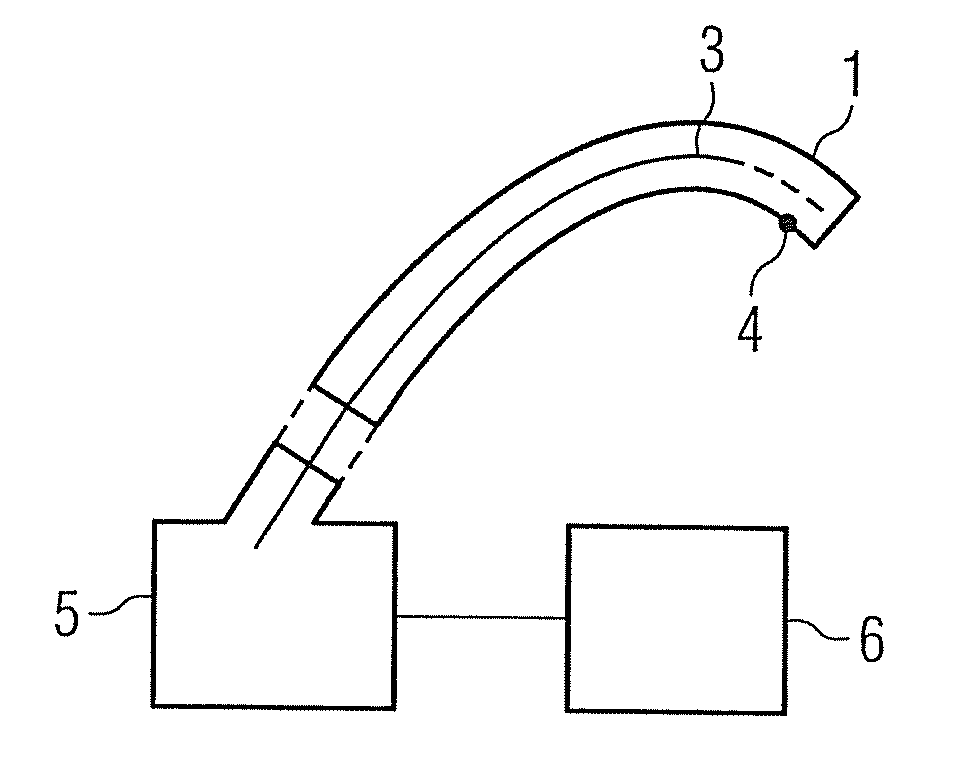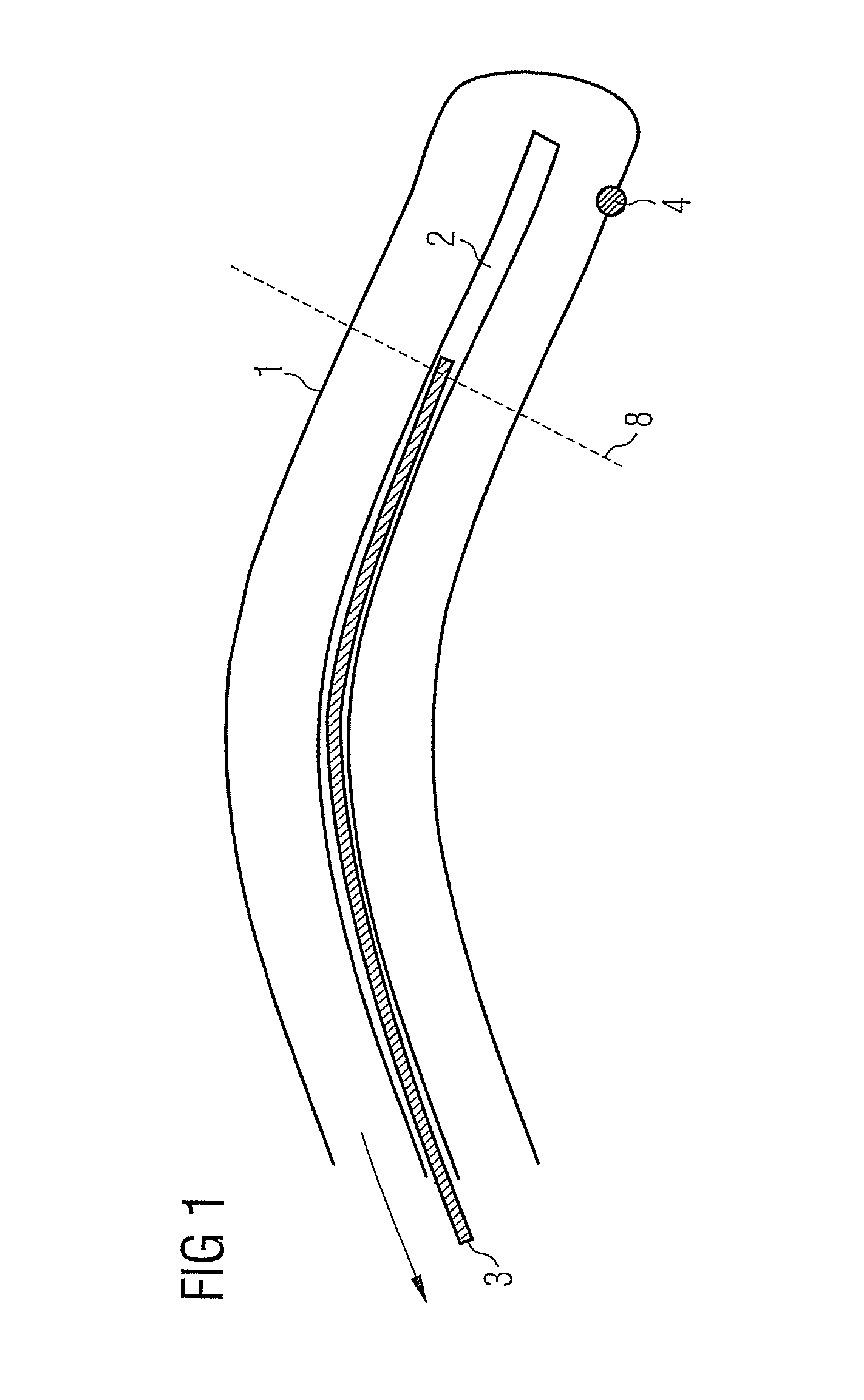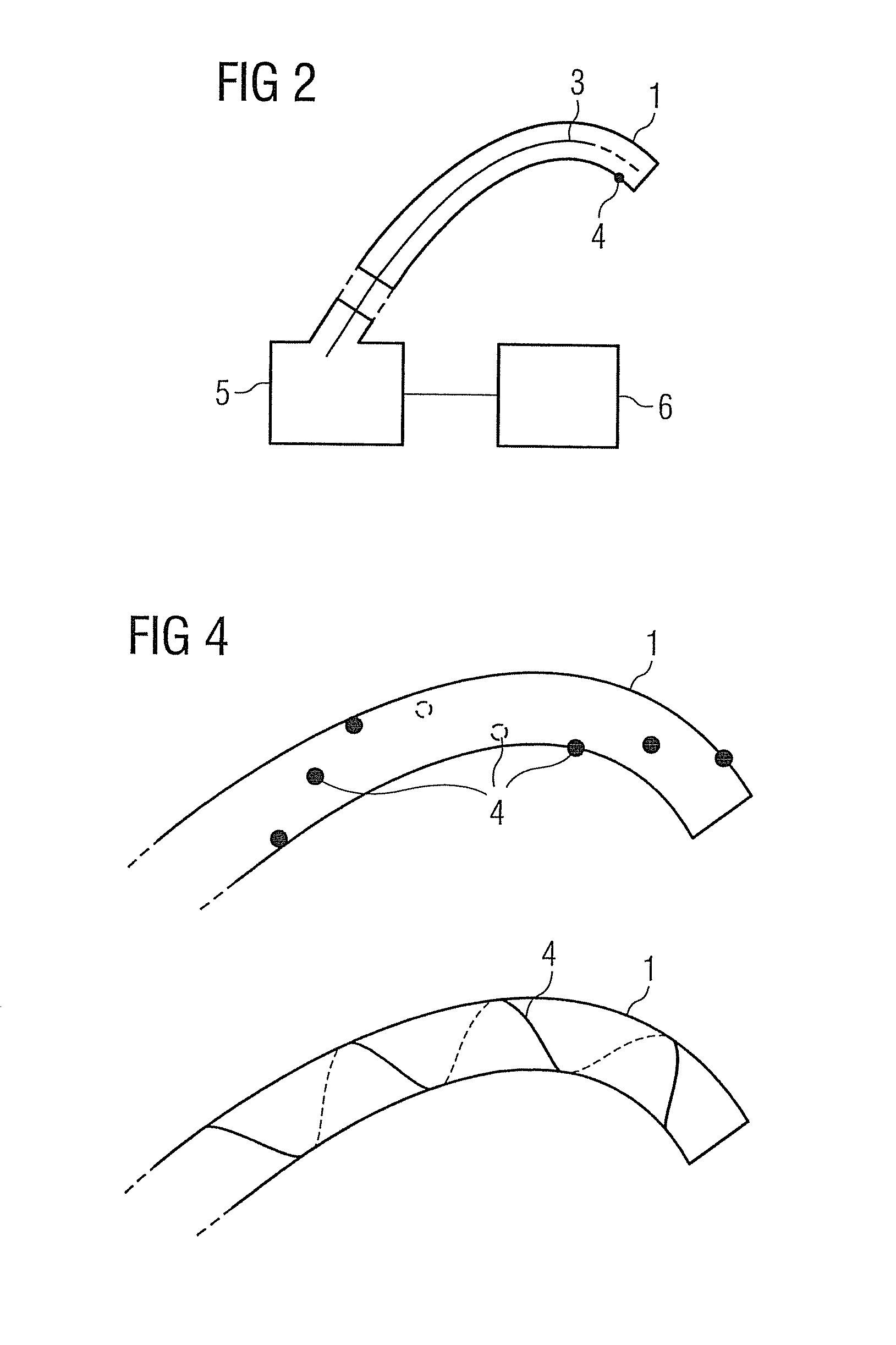Device and method for intraluminal imaging for the reconstruction of 3D image data sets
a technology of intraluminal imaging and image data, which is applied in the field of intraluminal imaging, can solve the problems of inability to produce such a mold, inability to accurately align individual sections of images with three-dimensional image data sets, and inability to accurately align individual sections. the effect of the mold is simpl
- Summary
- Abstract
- Description
- Claims
- Application Information
AI Technical Summary
Benefits of technology
Problems solved by technology
Method used
Image
Examples
Embodiment Construction
[0028]In the present example a three-dimensional image data set of the volume of the auditory canal of a patient is recorded using optical coherence tomography (OCT). This is done using an imaging catheter 3, as is known for example from U.S. Pat. No. 6,134,003 A. Details of such an imaging catheter are thus not provided in this patent application.
[0029]In addition to the imaging catheter 3, the present device comprises a curved, rigid guide pipe 1 with known geometry. This guide pipe 1 features, as can be seen from the cross-sectional schematic diagram in Figure, an internal channel 2 which is matched in its diameter to the external diameter of the imaging catheter 3. In the present example the guide pipe 1 is made of a plastic material transparent for optical radiation, so that imaging with the imaging catheter 3 is made possible through the guide pipe. The guide pipe 1 is closed off at its distal end. This end is provided for safety with a soft, yielding material or is made of su...
PUM
 Login to View More
Login to View More Abstract
Description
Claims
Application Information
 Login to View More
Login to View More - R&D
- Intellectual Property
- Life Sciences
- Materials
- Tech Scout
- Unparalleled Data Quality
- Higher Quality Content
- 60% Fewer Hallucinations
Browse by: Latest US Patents, China's latest patents, Technical Efficacy Thesaurus, Application Domain, Technology Topic, Popular Technical Reports.
© 2025 PatSnap. All rights reserved.Legal|Privacy policy|Modern Slavery Act Transparency Statement|Sitemap|About US| Contact US: help@patsnap.com



